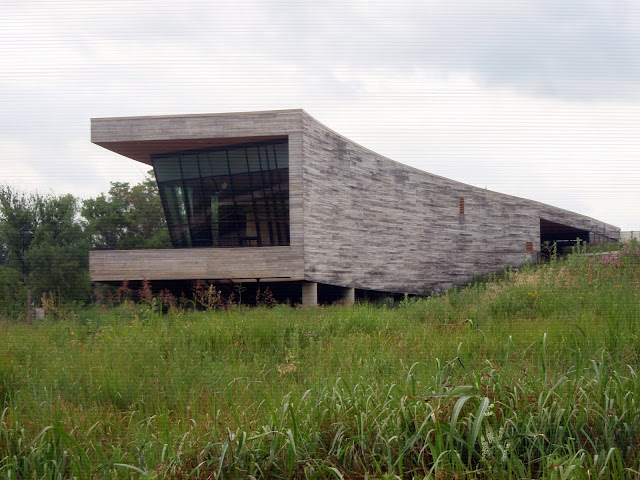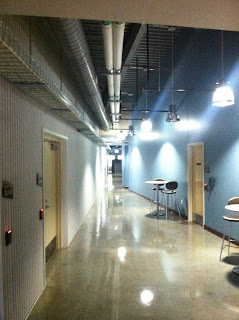Site: Bedford Public Library
Address: 2424 Forest Ridge Dr., Bedford, TX 76021
Host: Maria Redburn
http://www.bedfordlibrary.org/
Building Details and Features:
- Current building configuration was designed within a former Food Lion store
- Geothermal well field
- Solar panels on roof
- Energy saving reflective roof membrane
- T-8 Lighting
- Drought-resistant landscaping
Our tour of the Bedford Public Library showcased some of their effective strategies for minimizing energy comsumption and maximizing efficency.
The Library received two different grants, one from SECO in the amount of $1.9 mil. and the other from the Department of Energy in the amount of $200,000. The grants were used to put on a reflective white roof membrane and to then add solar panels to the roof. More research is needed on my part to determine what types of roofs qualify for Energy Department grants and if any of our future roof needs for my company could qualify. We currently typically use a .060 mil TPO for most replacements.

The solar panels seemed to be efficient in generating electricity as Maria reported that almost all of the electricity that was used by the library was generated from the panels. They currently do not sell back their excess usage. More in-depth analysis would be needed to determine how much time it would take to see a positive return on investment. My guess is that the solar panels wouldn't ever cover their total cost when factoring in initial cost, maintenance costs, and ongoing replacement costs. Maria reported that each panel that would need to be replaced costs $1200 per panel and that panels generally have a useful life of approximately 25 years. It would take additional research to determine if these panels made economic sense for a private builder or if there wasn't access to financial assistance.
In my opinion, the most impressive features of the building were the geothermal wells. This technology is new to me but the concept seemed straightforward and wasn't cost-prohibitive. According to Maria, there was an additional cost of around $200,000 when putting in the HVAC system to add the wells. Since the air temperature underground stays around 50-60 degrees, it takes much less energy to get the underground air to a comfortable climate as compared to taking air supply from the roof with a temperature that could fluctuate greatly. There was no trace on the surface of the wells that were working underground and the area could be covered with parking, outdoor seating, or a variety of other uses. This picture from a private contractor website (
http://www.gscgeo.com/GeothermalCooling.asp) seems to illustrate the process.

Some of the other interesting elements of the building were the native landscaping, the automated book sorter, the windows and their configuration and the lighting upgrades. Using drought-resistant landscaping with a crushed rock base looks good and saves a tremendous amount of irrigation. The book sorter made the office operations more efficient and allow staffing rollbacks. The windows had additional thickness and were configured in a way that restricted late date sun from the west. The T-8 lighting created a bright, white natural light and ran the entire adult reading section of as much power as a standard hairdryer.

Through the usage of two grants and some excellent independant research by Maria, the Bedford Public Library should be an efficient building that serves the community for years to come. More research would be needed to determine the return rate of individual sustainable improvements to the building but in general, I was very impressed with the design and execution of the building's sustainble features.
 Our quick stop at Green Living in Dallas allowed us to look around through a variety of green-based products for the home, such as furniture, paints, interior finishes, and yard maintenance products. Many of the products were appealing and some of them were not significantly more expensive than regular household goods. I paricularly enjoyed some of the furniture that was offered by Rizzy Furniture, a companythat sells furniture and home products that are exported from India. (http://www.rizzyhome.com/index.php)
Our quick stop at Green Living in Dallas allowed us to look around through a variety of green-based products for the home, such as furniture, paints, interior finishes, and yard maintenance products. Many of the products were appealing and some of them were not significantly more expensive than regular household goods. I paricularly enjoyed some of the furniture that was offered by Rizzy Furniture, a companythat sells furniture and home products that are exported from India. (http://www.rizzyhome.com/index.php)



































